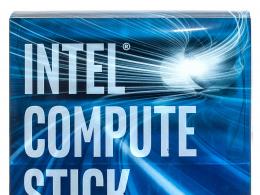0x0000009f what an error. How to fix DRIVER_POWER_STATE_FAILURE blue screen errors (0x0000009F)
Assumes a problem when the driver is in an inappropriate or inconsistent power value.
Causes
Most often, the driver is at fault for failing to properly process an incoming power change request. As practice shows, the most common issuance time is the moment of reboot, as well as entering or exiting sleep mode.
Parameters
There is text information on the blue screen of death. Immediately after specifying the error code, there will be 4 parameters in brackets.
STOP 0x0000009F (parameter1, parameter2, parameter3, parameter4) DRIVER_POWER_STATE_FAILURE
The first of them deserves special attention, since it determines the meanings of the others. This should be discussed in more detail in the table below (DT stands for Device Object, GCC stands for Target Device Object):
|
parameter1 |
parameter2 |
parameter3 |
parameter4 |
Why does it appear |
|---|---|---|---|---|
|
Is given |
Is given |
OU continues to be released, but the power request has already arrived |
||
|
Driver object |
The da has finished executing I/O requests while requesting the power state, but did not call Po Start Next Power Irp |
|||
|
0x3 (may only occur on Windows 2000) |
The object pointer is the target device |
Pointer to OU |
Happened incorrect installation IRP driver to one of the modes (end of IRP or waiting) |
|
|
Blocked IRP |
OU blocking IRP continued unnecessarily a long period time |
|||
|
Timeout value (set in seconds) |
Blocking PnP flow |
In the operating room Windows system 7 is supposed to point to nt! TRIAGE 9F PNP |
Switching to another power state caused a timeout for synchronization |
|
|
0x101 (Occurs exclusively on Windows 2000) |
Parent device object |
The parent device object detected that the DO POWER PAGABLE bit was not set in the child device |
||
|
0x500 (Occurs exclusively on Windows XP and Server) |
Is reserved |
target device object |
target device object |
The device object completed executing I/O requests while requesting power position, but did not call Po Start Next Power Irp |
Solutions
There are several options that can help in this situation. We need to consider them more closely:
- Run the updates recommended by the operating system. Often, drivers are optional updates. You should not be embarrassed by such an inscription.
- List being viewed installed updates. It is possible that one of them caused the failure. It is required to correlate the time of occurrence of the error and the date of installation of updates. If the problem started immediately after said decision, you should replace the driver or update it from another source.
- There are several applications whose activities can cause a crash of this type. This should include OpenHardwareMonitor, Daemon Tools and drivers for Realtek devices.
- The operating system has a good built-in driver checker Verifier.exe. You should follow a similar procedure to locate the problematic file.
This post will help you fix stop error: Driver_power_state_failure in Windows 8 | 7. This particular Blue screen error is also known with a bug check code 9f or 0x0000009f , below are the steps to fix it. The most common cause of this error is out of date driver software of your installed hardware. Another cause is out of date BIOS or a recent change in hardware | Software. DRIVER_STATE_POWER_FAILURE is a blue screen error that occurs when there is a change in power state, i.e. when you shutdown, restart or put your computer to sleep, hibernation etc. So, while this process is running all of the hardware installed in your computer are directed to change their power state to lose power (to shutdown), but when there is a fault in a particular device driver, the corresponding device does not respond as Windows wants it to and hence you face this STOP error .
Here are a few ways that you can fix this BSOD :
Method 1: Updating Driver Software
- Go to Windows update (type Update in start screen or Start menu)
- Open the update application
- Now, Click on check for updates
- Click on optional updates section & select any and all hardware device driver updates


- After the installation is complete, restart your computer.
alternative,
- You can go to your Motherboard / System / Independent Hardware manufacturer’s support website
- Search for any driver updates that they might be offering and install them.
Method 2: Using Driver Verifier
Before starting this procedure, it is recommended that you create a system restore point , so that you can fall back on it if something goes wrong.
This process will help you pin point the exact driver that might be causing this blue screen error. Remember, if the Driver verifier find an issue your computer might throw a BSOD again. That is why we made a system restore point, so that we can simply run system repair and get the computer to it’s previous state.
- Go to the start menu(Windows 7) & start screen(Windows 8)
- type Verifier and press Enter
- click on Create custom settings (for code developers)
- Click Next
- Select individual settings from a full list
- Next
- Check these boxes es from the list
- Special Pool
- Pool tracking
- Force IRQL Checking
- Deadlock Detection
- Security Checks (Windows 7)
- Concurrency Stress Test (Windows 8)
- DDI compliance checking (Windows 8)
- Miscellaneous Checks
- click on Select driver names from a list
- click on Provider tab.
- Check every driver that is not by Microsoft
- Click on Finish
- Restart your computer
- It is highly recommended that you run this verifier for at least 24-36 hours
For more information on Driver Verifier you can look at this support article by Microsoft
Method 3: Updating the BIOS
Updating your Computer's BIOS is a critical process and need a fair bit of understanding on your part. It is always recommended that your only update your BIOS if highly necessary. Over the years motherboard / Computer manufacturers have made it easier for any user to update the BIOS, but still, it is a difficult process and if not done correctly, can brick your system and make it unusable. So, if you choose to update your BIOS, please do it at your own risk.
- To Update your BIOS
- Go to your Motherboard / Computer Manufacturer's support website
- Carefully locate your Motherboard / Computer make model and ver. and when 100% sure that you are at the right place, download the latest BIOS files
- Carefully read the documentation associated / provided by the manufacturer on how to update BIOS
- Before updating your BIOS, make sure that your computer, if a laptop / portable computer is at least 75% charged and if its a desktop computer, make sure that you have a stable backup power supply in case of a power loss.
- Use the updater / or the software / options provided by your Motherboard / Computer manufacturer
If you still face an issue, please write to us using the comments section.
Sometimes DRIVER_POWER_STATE_FAILURE errors like " blue screen" related to hardware may be caused by damage random access memory(RAM). If you experience random computer restarts, sound signals during startup or other computer malfunctions (in addition to BSOD errors 0x9F), it is very likely that there is memory corruption. In fact, almost 10% of Windows application crashes are caused by memory corruption.
If you have recently added new memory to your computer, we recommend temporarily removing it to make sure it is not causing the DRIVER_POWER_STATE_FAILURE error. If this action fixed the BSOD, then that is the source of the problem, and therefore the new memory is either not compatible with some of your hardware or is corrupted. In this case, you will need to replace new memory modules.
If you haven't added any new memory, the next step is to run a diagnostic test on your computer's existing memory. A memory test allows you to scan for severe memory failures and intermittent errors that may be causing your blue screen of death 0x9F.
Although latest versions Windows includes a RAM test utility, I highly recommend using Memtest86 instead. Memtest86 is a testing software based on the BIOS, unlike other test programs that run in Windows environment. The advantage of this approach is that the utility allows you to check ALL operating memory for DRIVER_POWER_STATE_FAILURE errors, while other programs cannot check memory areas occupied by the program itself, the operating system, and other running programs.
Often the error 0x0000009f appears on computers with Windows 7, 8 and 10. In addition to the code on the blue screen of death, there is an indication of DRIVER POWER STATE FAILURE 0x0000009f, which translates as "Power Driver Failure". Therefore, knowing the cause of the BSOD, you can fix the blue screen of death with the code 0x0000009f on any version operating system Microsoft.
Step-by-step instructions to solve the blue screen of death 0x0000009f
The blue screen of death with the code 0x0000009f occurs when the computer wakes up from sleep mode, as well as changes in system settings and software installations that affect the power plan of the device. Therefore, if you encounter a DRIVER POWER STATE FAILURE error and code 0x0000009f, you should familiarize yourself with the following methods for solving it.
Method number 1
In order to fix the DRIVER_POWER_STATE_FAILURE problem, it is worth updating the software that is responsible for powering the device. Often bundled with a laptop and motherboard come software for power settings. This is ACPI. They need to be reinstalled or updated.
To do this, do the following:
- Open "Device Manager", "Batteries". Expand the branch and update the drivers for all components.
- Click on an element right click mouse and select "Update driver".

- After updating the drivers (it is better to do it manually by downloading the software from the official website of the laptop manufacturer), we reboot the system.
IMPORTANT! If the blue screen of death appeared on the computer, and not on the laptop, then in the "Device Manager" you need to open the "Computer" branch. Here we select "ACPI".

We update or completely reinstall the driver that matches the version and bit depth of the operating system.
Method number 2
If the driver has been damaged and you do not know the reasons for this, then you must first check the system for viruses, and then run. To do this, we run command line with Administrator rights and enter the command "sfc /scannow".

After checking the system for file integrity, it is worth rebooting the system.
Method number 3
The power supply is also affected fast start systems. To change this situation, you need to do the following:
- Open the "Control Panel" and select the "Power Options" section.

- A new window will open. Select "What the power buttons do" from the menu on the left.

- Here we turn off the function " quick start' and reboot the system.
Method number 4
On the official Microsoft forum for solving BSOD 0x0000009f, they recommend motherboard(BIOS).

If the above methods did not help to solve the problem, you need to roll back the system to an earlier state, when the error has not yet been observed.
Today we will look at:
Error code 0x0000009F with the accompanying blue screen can occur on different Windows versions(from XP to "seven" and above), and the most difficult thing in solving this problem is that there is no single algorithm for solving this problem, so you have to sort through all possible options. To make your life easier, we have put together possible solutions problems when the 9f () error in Windows 7 and other versions of this operating system shows its symptoms, and you need to do something about it.
Cause of error 9f
The main source of such a problem is a non-working driver for one of the connected devices. This driver can be installed correctly, however, for various reasons, it could fail, as a result of which it cannot process incoming requests.
As a rule, this occurs when the computer has been turned off frequently due to network outages or prolonged overload. There are also cases when, during the standard exit from hibernation or sleep modes, error 0x0000009F also made itself felt by the appearance of a blue screen.
Fixing the Problem: First Steps
- if you are the owner of the chipset AMD Radeon, and your computer is running Windows 7 or Vista, then a special "patch" from Microsoft will help solve the problem, which you just need to download and install. The installation process is standard, however, if you feel that you may have problems with this, then on the same page below there is official instruction to install MicrosoftFixit.msi;
- if the blue screen error 9f is bothering you on Windows 7 or Windows Server 2008, but your chipset is not from AMD, we recommend that you download and install this patch from the same Microsoft;
- in cases where the blue screen with the code 0x0000009F bothers you when you exit hibernation or sleep mode in Windows 7 or Windows Server 2008, then download and install this "fix".
If none of these points suit you personally, then follow the further instructions.
Fixing the Problem: A Solution for Everyone
As we said earlier, the problem with error 9f occurs due to an inoperable driver. It follows that given driver must be replaced with a working version.
The easiest and most effective way to do this is to use special utility to install, remove or update drivers. We recommend that you use the application Driver Pack Solution, which is constantly updated, and when analyzing your operating system, finds and flags all drivers that are outdated, not working, or missing.
You can learn more about it from our article.
Outcome
We hope this information was useful to you, and now you understand how to respond to the blue screen error 9f in Windows 7 and beyond. If you still have or have new questions - ask them in the comments, and we will answer them.






